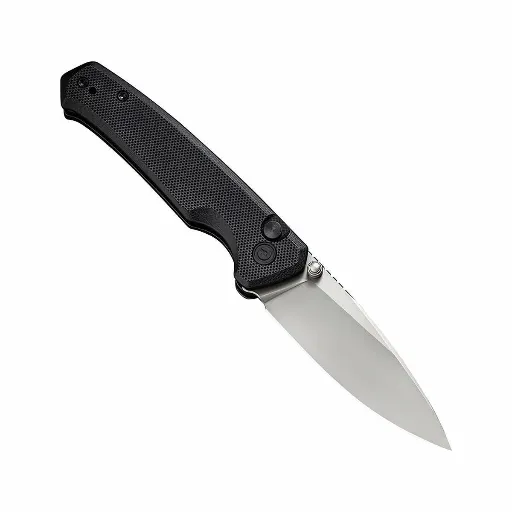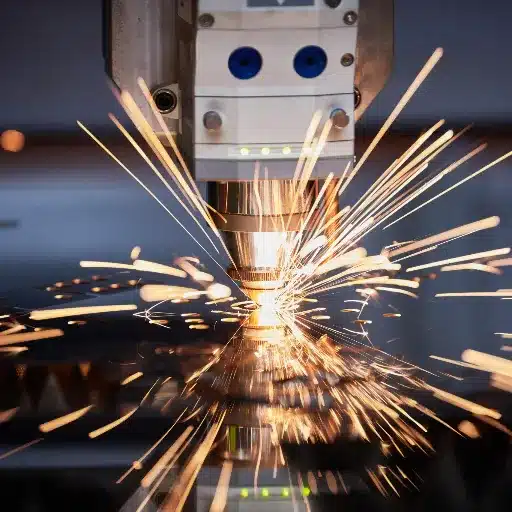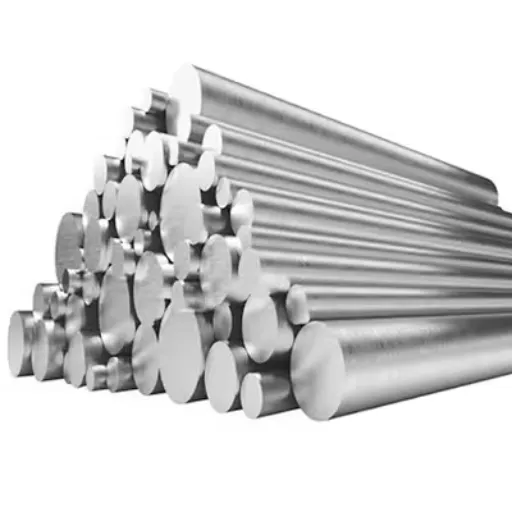The consideration of tools and equipment materials often boils down to two popular options: Chrome Vanadium (CrV) and Carbon Steel. Both materials have excellent reputations across different industries because of their strength, durability, and performance, but both offer unique qualities simultaneously. Whether you are a DIY hobbyist, a professional mechanic, or just interested in metals, knowing the difference among these materials is essential. This guide will focus on the distinct aspects of Chrome Vanadium and Carbon Steel, outline their composition, advantages, best uses, and help you determine which material will work best for you.
What is Chrome Vanadium Steel?
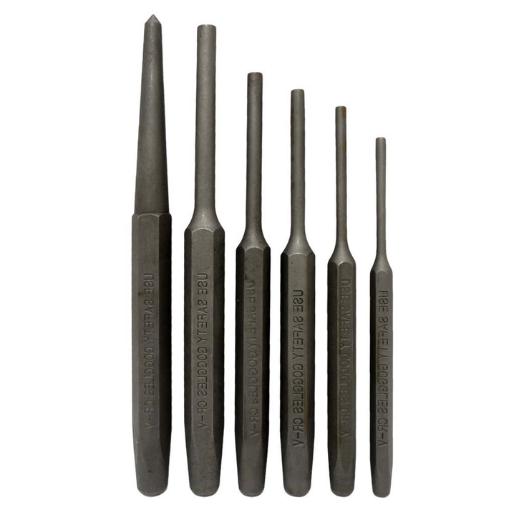
Chrome Vanadium Steel (CrV) is an alloy with remarkable strength features. It is composed of steel, chromium, and vanadium. Its durability, toughness, and better resistance to abrasion and corrosion make it a popular choice for manufacturing tools such as wrenches, screwdrivers, and sockets. Tools used for construction are mostly made from this metal because chromium and vanadium make steel rust resistant, improving hardness and overall strength, thus ensuring the tool can stand heavy use and high-impact applications.
Composition of Chrome Vanadium
As the name suggests, chrome vanadium steel comprises a metal matrix of Iron, with Chromium and Vanadium as key alloying constituents, along with traces of other metalloids. The normal composition of chrome vanadium steel is not static due to various factors, but it usually contains the following steel ingredients:
- Ferrum (Fe) 96-98%: The alloy’s main ingredient provides structural strength as it is the base material.
- Chromium (Cr): ~0.80-1.50%: It enhances the metal’s corrosion resistance, wear resistance, and hardenability.
- Vanadium (V): 0.15-0.30%: Adds to the alloy’s strength, toughness, and shock resistance.
- Carbon (C): ~0.50-1.00%: This element improves the hardness and strength through heat treatment and provides a critical component.
- Manganese (Mn): 0.70-1.00%: Gives strength and wear resistance while making the material easier to work with.
- Silicon (Si): 0.15-0.35%: Aids deoxidizes the alloy and adds to elasticity.
- Phosphorus (P) and Sulphur (S): They exist in negligible concentrations, defined to avoid losing ductility and toughness.
C-vanadium steel alloys outperform other materials in resisting great amounts of stress, pressure, and wear, making them highly durable. Moreover, they offer reasonable tensile and yield strength with a long life even in harsh conditions, perfect for tools that undergo frequent and devastating impacts.
Properties of CrV Steel
Chrome vanadium (CrV) steel has an extensive list of properties that make it exceptionally useful for most intense applications. Here are five features of CrV steel:
- High Tensile Strength: CrV steel is highly resistant to breaking under tension, which makes it desirable for tools and machinery that undergo heavy stress.
- Excellent Wear Resistance: The addition of chromium allows the steel to resist wear and abrasion, thereby increasing its durability.
- Good Toughness and Ductility: CrV steel is tough and flexible, able to withstand impacts and heavy loads.
- Corrosion Resistance: The amount of chromium in the steel also increases its ability to withstand oxidation and rust, which is important for tools in harsh or moist environments.
- Heat Treatability: CrV steel’s hardness and strength can be altered for specific applications, which allows it to be modified by heat treatment processes.
Common Uses of Chrome Vanadium Steel
| Application Area | Key Uses |
|---|---|
| Hand Tools | Wrenches, pliers, sockets, ratchets |
| Automotive Components | Gears, axles, crankshafts |
| Industrial Machinery | High-stress components, spring wires |
| Aerospace | Fasteners, lightweight structural parts |
| Construction Equipment | Hammers, axles, shafts |
| Precision Instruments | Micrometers, calipers |
How Does Carbon Steel Vs CRV Steel?
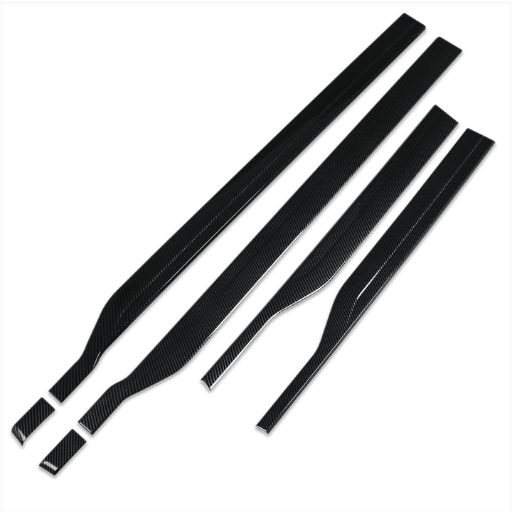
| Feature | Carbon Steel | Chrome Vanadium Steel |
|---|---|---|
| Corrosion Resistance | Poor, prone to rust | Excellent, high chromium content |
| Strength | Strong, depends on carbon content | Very strong, high tensile strength |
| Flexibility | High, easy to shape | Less flexible, more rigid |
| Durability | Durable, needs maintenance | Extremely durable, long-lasting |
| Cost | Affordable | More expensive |
| Best Use Case | Cutting tools, knives, and construction | Hand tools, wrenches, sockets |
Characteristics of Carbon Steel
Carbon steel is popular because of its high durability, strength, and cost. Due to its composition with only iron and carbon, it is easy to work with for various manufacturing processes. However, it is not as resistant to corrosion as CRV steel, which requires more alloying elements. This makes it a good choice for parts that need to withstand wear and tear, like in tools and machinery, but it has less corrosion resistance than CRV Steel. Additionally, it lacks some flexibility when compared to chrome vanadium steel.
Applications of Carbon Steel in Industry
Carbon Steel is utilized in building, automotive, and manufacturing because it is cheap and durable. It’s used for making tools, pipes, machines, and even structures themselves.
Pros and Cons of Using Carbon Steel
| Aspect | Pros | Cons |
|---|---|---|
| Strength | High strength and durability | Brittle at high carbon content |
| Cost | Affordable and widely available | Higher cost for high-carbon grades |
| Corrosion | Resistant with coatings | Prone to rust without protection |
| Machinability | Easy to machine in low-carbon grades | Difficult to machine in high-carbon grades |
| Applications | Versatile for tools, construction | Limited in corrosive environments |
| Heat Treatment | Improves hardness and wear resistance | Can cause deformation or cracking |
Which is Better for Hand Tools: CrV or Carbon Steel?
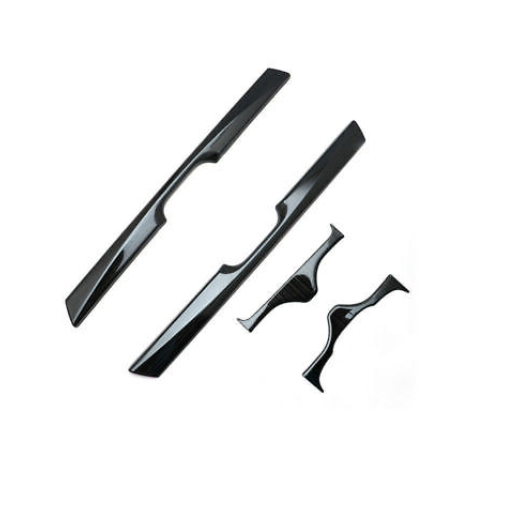
The decision between using CrV (chrome vanadium) and carbon steel for hand tools is too specific regarding use and requirements. CrV steel is usually better for hand tools such as wrenches and screwdrivers, which need strength, wear resistance, and protection from corrosion, as it is alloyed with chromium and vanadium. These two elements increase the tool’s durability and its rust resistance. On the other hand, carbon steel is best suited for chisels and knives because of its toughness and ability to hold an edge. Though carbon steel might need more maintenance to avoid rust, it performs well for tasks that require precision. Ultimately, the better option depends on the tool’s intended use and how much durability and maintenance are needed.
Strength and Durability of Hand Tools
The strength and endurance of hand tools are determined by their construction materials and how they are manufactured. Modern hand tools are often made of alloys, and chromium-vanadium steel hand tools provide incredible tensile strength, wear, and corrosion resistance. The tensile strength of chromium-vanadium steel tools ranges from 700 to 1200 MPa, which is exceptional for enduring tasks like impact use or heavy-duty applications.
Another important factor is heat treatment, as it improves the hardness and toughness of metals. Carbon steel tools with appropriate heat treatment are renowned for their capability to withstand deformation and retain a sharp edge and stiff blades, which are important for chisels and cutting equipment.
Changes in coatings and finishes have also proven favorable. Tools with protective coatings, such as titanium nitride or black oxide, have superior resistance to corrosion and surface wear. A study states that titanium-coated tools can endure four times longer than uncoated tools when operated under the same conditions.
Finally, integrating ergonomic designs with composite materials like fiberglass and reinforced plastics enhances safety and durability by minimizing the risk of tool breakage. Users and professionals are assured of long-lasting reliability by selecting tools made of durable and properly treated materials integrated with advanced technologies.
Corrosion Resistance of CrV vs. Carbon Steel
One of the primary considerations for selecting tools is the corrosion resistance of Chrome Vanadium (CrV) steel and Carbon Steel. This is especially the case in environments susceptible to moisture or chemicals. CrV Steel contains chromium, increasing its resistance to rust and oxidation through a protective oxide layer. On the contrary, carbon steel has insufficient chromium content, making it more susceptible to corrosion without proper coatings or treatments.
Below is a detailed comparison of CrV steel and Carbon Steel’s corrosion resistance alongside changing parameters.
- Exposure to Humid Environments
- CrV Steel: Tools can preserve surface integrity for a long period, extending the limit of surface chromed tools due to the chromium content.
- Carbon Steel: If not treated, these tools are at a higher probability of rusting.
- Saltwater Resistance
- CrV Steel: Performs moderately but does benefit from added chrome or nickel plating.
- Carbon Steel: Corrodes fast without proper treatment or sealing.
- Chemical Exposure (e.g., acids and alkalis)
- CrV Steel: Has a thin protective layer but needs additional coating for long-term durability.
- Carbon Steel: Without any constructive protection, it will corrode quickly.
- Surface Treatment & Adequacy
- CrV Steel: Once coatings wear off, resistance is preserved due to chromium.
- Reapplying coatings over Carbon Steel requires frequent maintenance, as it is highly susceptible to corrosion.
- Lasts Longer When Stored Outdoors
- CrV Steel withstands outdoor conditions better than other materials, especially in harsh environments.
- Compared to claiming that CrV Steel outperforms the rest, lower levels of care and protective layering around outdoors damage the carbon steel significantly faster.
Even though both materials benefit from proper treatment and coating, CrV Steel is preferred over Carbon Steel for demanding areas because it provides better resistance to corrosion and cuts down on the duration of effectiveness, prolonging overall sustained use.
Cost-effectiveness of Tools Made from CrV and Carbon Steel
| Aspect | Chrome Vanadium (CrV) | Carbon Steel |
|---|---|---|
| Initial Cost | Higher due to premium alloying elements | Lower, more affordable upfront |
| Durability | Extremely durable, long-lasting | Durable but requires regular maintenance |
| Corrosion Resistance | Excellent, resists rust and oxidation | Poor, prone to rust without protection |
| Maintenance Needs | Low, minimal upkeep required | High, frequent maintenance needed |
| Best Use Case | High-stress, high-impact tools | Budget-friendly, general-purpose tools |
| Long-term Value | High, fewer replacements needed | Moderate, higher replacement frequency |
Why do Some Manufacturers prefer Vanadium Steel?
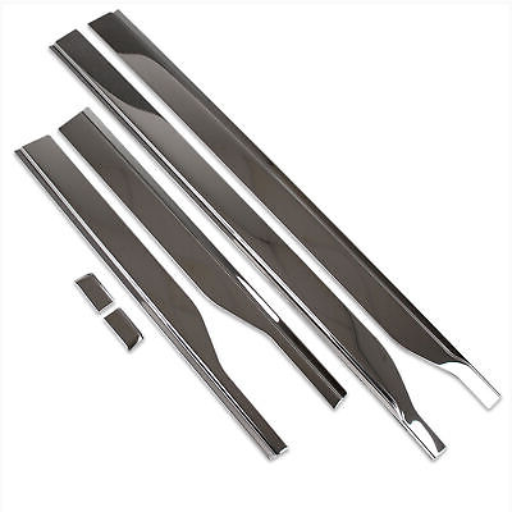
Some manufacturers prefer using vanadium steel due to its blend of high strength, increased toughness, and durability. Vanadium’s inclusion increases the material’s resistance to wear, impact, and fatigue, which is ideal for tools and machinery. In addition, vanadium steel’s strength in retaining the edge and shape offers a longer lifespan than standard carbon steel. These qualities make it a reliable and cost-effective choice for applications requiring both strength and precision.
Role of Vanadium in Steel Alloys
Vanadium is extremely important for steel alloying since it increases the steel’s strength, hardness, abrasion, and corrosion resistance. It is common knowledge that when vanadium is added to steel, it alters the grain structure to a finer and uniform grain size. This alteration increases toughness, which allows the steel to endure high mechanical stress. Research states that the most vanadium-rich steel alloys have percentages from 0.04% to 0.15%. This assures that the properties of the steel enable its usage while maintaining reasonable costs.
Vanadium has many applications blended with steel, one with HSLA (High-Strength Low-Alloy Steels). Research has observed that adding vanadium to HSLA steel increases its tensile strength by an astonishing 25-30% compared to HSLA steel lacking the vanadium component. This added strength makes HSLA extremely useful for construction, automotive frameworks, and pipeline manufacturing. Additionally, the vanadium carbide produced during the alloying reaction is known to resist abrasion, increasing the value of industrial tools and dies.
Vanadium’s role in boosting fatigue resistance of steel is also important. For example, micro-alloyed vanadium steels are employed in severe industry settings like aerospace and energy, where materials are subjected to cyclic loading and harsh conditions. More recent industry data suggests that the inclusion of vanadium can improve the fatigue life of steel components by about 20%, which reduces maintenance and replacement costs.
Moreover, vanadium increases the weldability and thermal properties of steel alloys, allowing them to keep their shape even at high temperatures. This is especially useful in power plants since vanadium steels are used in heat exchangers and gas turbines. Tests have shown that vanadium alloys can remain stable up to 550 °C (1022 °F), which is higher than other steel alloys.
The combination of vanadium’s properties concerning steel and the lightweight, strong materials required worldwide highlights the need for derivatives steered toward critical industries. Further developments in vanadium alloys will likely increase its uses while advancing infrastructure and construction systemic changes.
Durability and Toughness of Vanadium Steel
Vanadium is a preferred accessory in steel making due to its durability and toughness, and v-anodized steel excels in these two aspects. Vanadium acts as a micro-alloying, therefore adding vanadium improves the microstructure while enhancing the resilience and toughness of the steel. Below are five details depicting the strength and flexibility of vanadium steel:
- Rigid Construction: Steel is ductile and pliable, and thus, industries like construction and automotive value it because it can withstand more than 800 MPa.
- Better Endurance to Stresses: Bridges and aerospace structures use vanadium steel because it is resistant against challenges such as cyclic loading.
- Deterioration Against Tough Usage: Servicing tools have a long life span thanks to the resistance to wear offered by vanadium carbides formed in the steel matrix.
- Greater Impact Resistance: The steel works well in challenging environments because of the vanadium’s effect on steel, leading to greater than 300 HB (Brinell Hardness). This ensures durability and endurance to impacts.
- Greater Endurance to Tough Usage: The addition of vanadium increases the verticality of the steel, improving its pliability on tools and machinery parts.
Due to it’s strength, flexibility, and long life, these properties make vanadium fundamental in steel industries.
How Does the Chrome Vanadium Alloy Perform in Different Environments?

The combination of chrome and vanadium is very durable and resistant to wear and corrosion, making it ideal in heavy bending applications. It has a tremendous amount of mechanical power under a lot of stress, making it perfect for many applications. Its powerful ability to restrain damage is also instrumental in moist or aggressive chemicals. It also has a very high corrosion resistance at high temperatures, allowing it to be used in extreme environments. Due to these factors, chrome and vanadium are alloys that industries can rely on for demanding tasks.
Impact of Corrosion on CrV
| Aspect | Impact on CrV Steel |
|---|---|
| Corrosion Resistance | High due to chromium content |
| Protective Layer | Chromium forms a rust-resistant barrier |
| Moisture Exposure | Prolonged exposure can still cause rust |
| Maintenance Needs | Minimal, but regular cleaning is advised |
| Best Use Case | Ideal for moist or chemical environments |
Wear Resistance of Chrome Vanadium Steel
Because it offers exceptional wear resistance, chrome vanadium steel is well known for being an ideal selection for equipment and applications that undergo repetitive patterns of stress and friction. Its durability level is unrivaled due to an alloy of two metals, chromium and vanadium, improving hardness, surface modification, and deformation resistance. The effectiveness of alloy’s chromium in forming a thin oxide layer of the range c restricted chemical corrosion makes it susceptible to abrasive wear, and, while vanadium enhances its toughness through grain refinement, further improves chrome vanadium steel excellence.
According to business information, chrome vanadium steel receives proper heat treatment, undergoing 50 to 60 HRC, implying flawless destruction and maintaining an astounding lifespan for the device under extreme conditions. CrV steel wrenches, sockets, and impact-resistant tools can surpass millions of cycles and still function flawlessly without observable impairment. Suppression of fatigue wear also contributes to the lifespan of these tools because their suppressive ability ensures nonbreakability under dynamic forces exerted over long durations.
Take, for example, the chrome vanadium alloy, which surpassed integrated carbon steel by 30% through a set of regulations for abrasion and shear tests. These results suffice as proof of structural integrity beyond the set time, demonstrating effectiveness being maintained after sustained use in aggressive work environments such as construction, automotive repair, or the machining industry.
The surface treatment of plating or nitriding further improves the wear-resistant characteristics of CrV by adding another layer of wear and corrosion protection that increases the life of the component. This illustrates why chrome vanadium steel is an invaluable material in high-impact operations where satisfying the needs of extreme durability and reliability are critical.
Adaptability to Various Mechanical Properties
Chrome vanadium steel is highly adaptable, enabling it to fulfill various mechanical needs for different industries. Adaptability is due to this steel’s versatility in undergoing treatments and modifications. The following are five key features to showcase its adaptability:
- Tensile Strength: Chrome vanadium steel has a remarkable tensile strength that makes it challenging to deform it under heavy loads. Depending on the heat treatment it undergoes, its tensile strength typically ranges from 800 MPa to 1500 MPa.
- Hardness: With the proper treatment, CrV steel gains considerable hardness, usually from 45 to 60 HRC (Rockwell Hardness Scale). This characteristic is important for tool wear resistance and edge retention.
- Toughness: Chrome vanadium’s hardness aside, it retains notable toughness, which enables it to withstand impact and fracture. This makes it ideal for tools that undergo sudden forces, such as wrenches and sockets.
- Elasticity: CrV steel has good elasticity, which means it can flex and return to its original position without suffering permanent deformation. This property is crucial for springs and pry bars.
- Corrosion Resistance: Natural vanadium chrome steel’s resistance to corrosion is complemented by additional measures like surface nitriding or plating, which further fortify its capability to withstand harsh environments.
These attributes make chrome vanadium steel a highly sought-after material in multiple industries due to its ability to perform and endure the demanding conditions often required of it.
References
- Design and analysis of CRV components in the Fermilab Mu2e experiment – This source discusses the design and analysis of CRV components, providing insights into material properties and applications.
- Fracture behaviour of P/M Cr-V ledeburitic steel with different surface roughness – This paper explores the fracture behavior of Cr-V ledeburitic steel under various conditions, offering detailed material analysis.
- Characterization and performance of duplex-coatings on Cr-V cold work tool steel – This study examines the microstructure, phase constitution, and mechanical properties of Cr-V steel with duplex coatings.
Frequently Asked Questions (FAQ)
Q: What are the main differences between Chrome Vanadium (CrV) and Carbon Steel?
A: The main differences lie in their composition and properties. Chrome Vanadium (CrV) is a type of alloy steel that includes chromium and vanadium, making the steel stronger and more corrosion-resistant. Carbon steel, on the other hand, primarily consists of iron and carbon, and is known for its high hardness and strength, but is more prone to rust.
Q: Why is Chrome Vanadium (CrV) used in tools like wrenches and screwdrivers?
A: Chrome Vanadium (CrV) is used in tools because it is an alloy steel with higher hardness and durability. The presence of chromium and vanadium both make the steel resistant to wear and corrosion, making it ideal for high-stress applications like wrenches and screwdrivers.
Q: How does the hardness of CrV compare to that of Carbon Steel?
A: Chrome Vanadium (CrV) generally offers higher hardness than carbon steel due to its alloying elements, chromium and vanadium. These elements help the steel resist deformation and abrasion better than carbon steel.
Q: What role does chromium play in Chrome Vanadium steel?
A: Chromium in Chrome Vanadium steel contributes to its corrosion resistance and hardness. It helps form a protective layer on the surface that prevents oxidation and rust, which is crucial for tools and machinery.
Q: Is Tekton a brand that uses Chrome Vanadium in their tools?
A: Yes, Tekton is a brand known for producing tools that often use Chrome Vanadium (CrV) steel. This choice of material enhances their strength and durability.
Q: How does the inclusion of vanadium affect the properties of steel?
A: When added to steel, vanadium improves its strength, toughness, and resistance to shock and vibration. It also helps the steel maintain its hardness after heat treatment, making it suitable for demanding applications.
Q: What is the significance of heat treatment in Chrome Vanadium and Carbon Steel?
A: Heat treatment is essential to enhance the mechanical properties of both chrome vanadium and carbon steel. In CrV steel, it helps achieve optimal hardness and toughness, while in carbon steel, it can improve hardness and reduce brittleness.
Q: How does the presence of manganese and silicon enhance steel properties?
A: Manganese and silicon are often added to steel to improve its strength and hardness. Manganese increases the steel’s hardenability and tensile strength, while silicon enhances its strength and helps deoxidize the steel during production.
Q: Can CrV steel be used in automotive applications?
A: Yes, CrV steel is commonly used in automotive applications due to its strength and corrosion resistance. Its ability to withstand high stress and resist wear makes it suitable for use in tools, parts, and components in the automotive industry.
Q: How does carbon content affect the properties of Carbon Steel?
A: The carbon content in carbon steel significantly affects its hardness, ductility, and strength. Higher carbon content typically increases hardness and strength but can also make the steel more brittle and less ductile.

